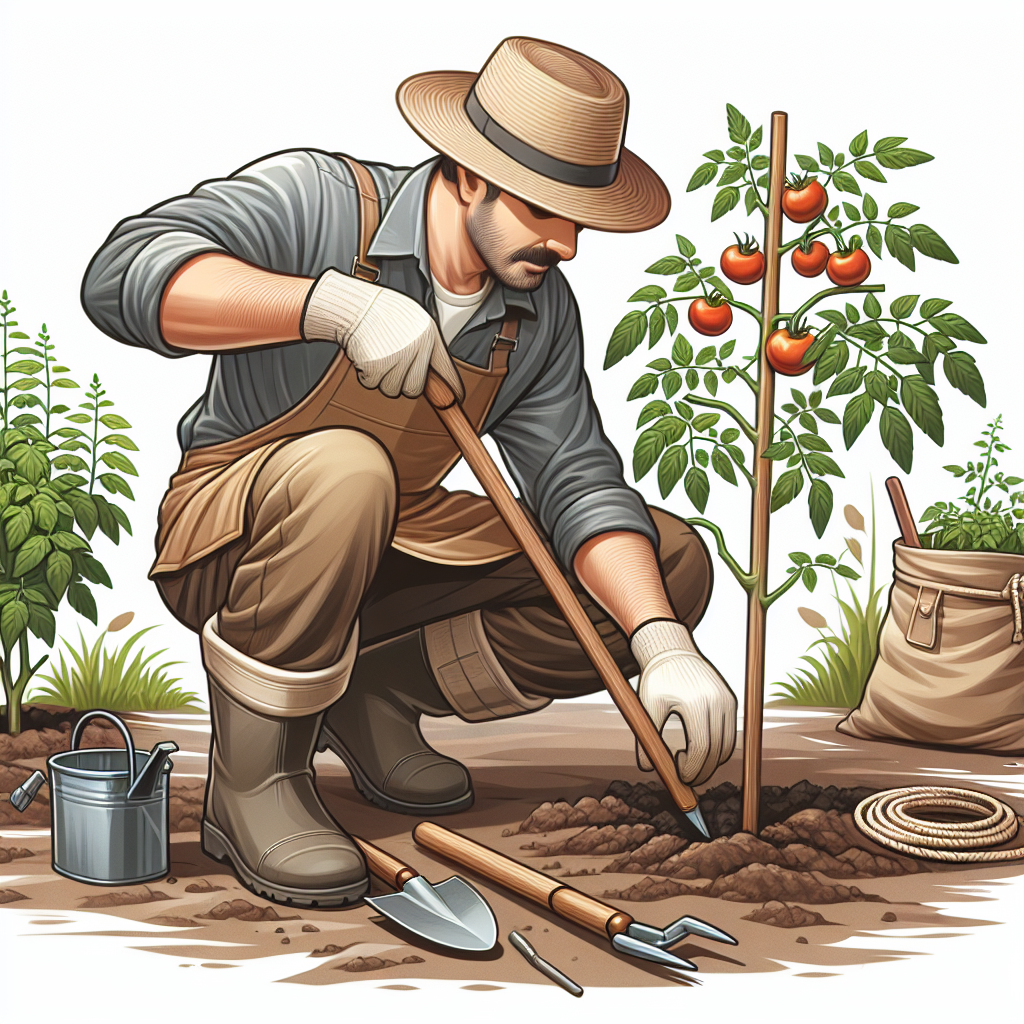
How to stake tomato plants
How to Stake Tomato Plants: A Comprehensive Guide
Growing tomatoes can be one of the most rewarding experiences for any gardener. The satisfaction of harvesting plump, juicy tomatoes fresh from your garden is hard to beat. However, to ensure your tomato plants thrive and produce abundantly, proper support is vital. In this article, we'll delve into how to stake tomato plants effectively, ensuring they get the sunlight and support they need to grow strong and healthy.
Why Stake Tomato Plants?
Staking is essential for tomato plants for several reasons:
- Improved Air Circulation: Staked plants have better airflow, reducing the risk of fungal diseases.
- Maximized Sunlight Exposure: Staking helps keep plants upright, allowing for maximum sun exposure, key to fruit production.
- Reduced Ground Rot: Keeping fruit off the ground helps prevent rot and keeps them cleaner.
- Space Efficiency: Vertical growth allows you to maximize space in your garden.
Choosing the Right Stakes
When it comes to staking, choosing the right materials is crucial. Here are some options you might consider:
- Wooden Stakes: Durable and natural, wooden stakes are easy to work with and can be found in various sizes.
- Metal Stakes: These provide more stability and can be reused for multiple growing seasons.
- Plastic Stakes: Lightweight and easy to handle, but might not provide as much sturdy support.
- Cages: Tomato cages can also serve as stakes and provide excellent support, especially for bush varieties.
How to Stake Tomato Plants: Step-by-Step Guide
Step 1: Timing Your Staking
It's important to stake your tomato plants early in the growing season, preferably when they are 12-18 inches tall. This ensures minimal disturbance to the roots.
Step 2: Gathering Your Supplies
Before you start the staking process, gather the necessary supplies:
- Stakes (wooden, metal, or plastic)
- Garden twine or soft ties
- Pruners (for trimming tomato plants if necessary)
- Measuring tape
- Hammer or mallet (for driving wooden stakes into the ground)
Step 3: Inserting the Stakes
Here’s how to insert the stakes properly:
- Identify where to place the stake. Ideally, it should be about 6 inches from the base of the plant to avoid root damage.
- Drive the stake into the ground, ensuring it goes at least 12 inches deep for stability.
- Make sure the stake is upright and straight before securing it.
Step 4: Tying the Plants to the Stakes
Once the stakes are in place, it’s time to tie your plants:
- Use garden twine or soft ties to gently secure the main stem of the tomato plant to the stake.
- Start tying at the base of the plant and work your way up, leaving space between the ties to allow for plant growth.
- Avoid tying too tightly, as this can damage the plant. The goal is to provide support without constriction.
Step 5: Maintaining Staked Tomato Plants
Caring for staked plants requires consistent attention:
- Check ties regularly to ensure they aren’t too tight as the plant grows.
- Remove any suckers (small shoots that grow between the main stem and branches) to direct energy towards fruit production.
- Continue to tie branches as they grow, maintaining support throughout the growing season.
Alternative Methods of Supporting Tomato Plants
While staking is not the only method of supporting tomato plants, understanding these alternatives is beneficial:
- Tomato Cages: These provide a self-supportive structure and are excellent for determinate varieties.
- Florida Weave: A method where plants are tied to horizontal strings strung between stakes, allowing for efficient space use.
- Spiral Tomato Supports: These are twisted supports that integrate into the soil and offer a unique aesthetic while providing stability.
Common Mistakes When Staking Tomato Plants
When learning how to stake tomato plants, be aware of these common pitfalls:
- Waiting Too Long: Staking too late can disturb roots and damage the plant.
- Using Inadequate Support: Failing to use sturdy stakes may lead to plants collapsing under the weight of their fruit.
- Tying Too Tight: Overly tight ties can choke the plant and limit its growth.
- Neglecting to Prune: Not pruning the plant can lead to overcrowding and limit air circulation, increasing disease risks.
- Ignoring Weather Conditions: In high winds or heavy rain, stakes must be strong enough to withstand the elements. Regularly check their stability.
Conclusion
Knowing how to stake tomato plants is an invaluable skill for any gardener. By providing your tomato plants with proper support, you encourage healthy growth, improve air circulation, and reduce disease risks. Implement these techniques, and enjoy a bounty of delicious tomatoes straight from your garden!
“The garden is a love song, a duet between a human being and Mother Nature.” – Anonymous
Investing time and effort in staking will result in stronger plants and better yields. Happy gardening!
By Guest, Published on September 22nd, 2024